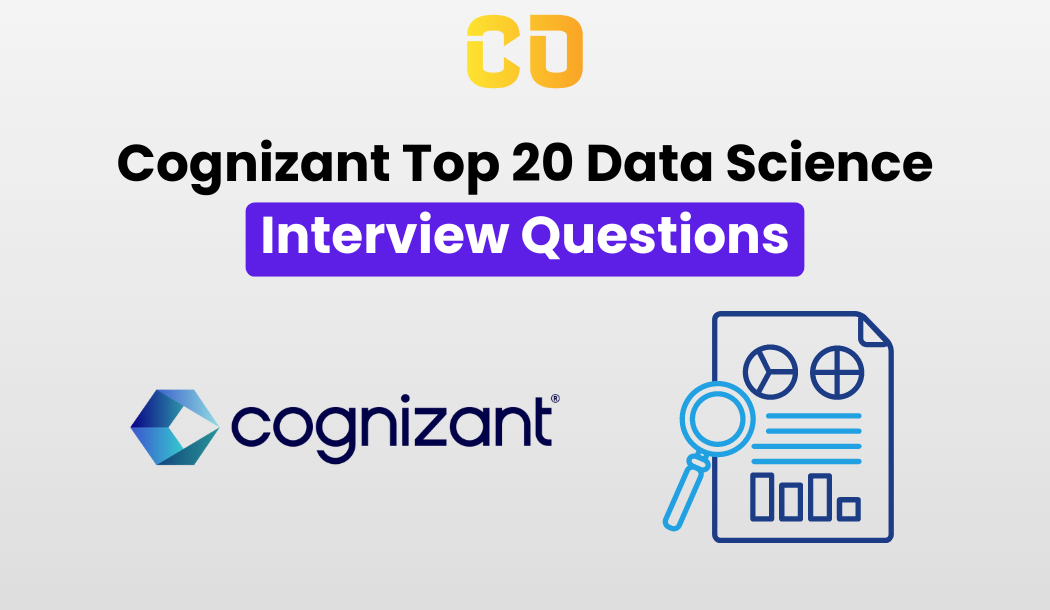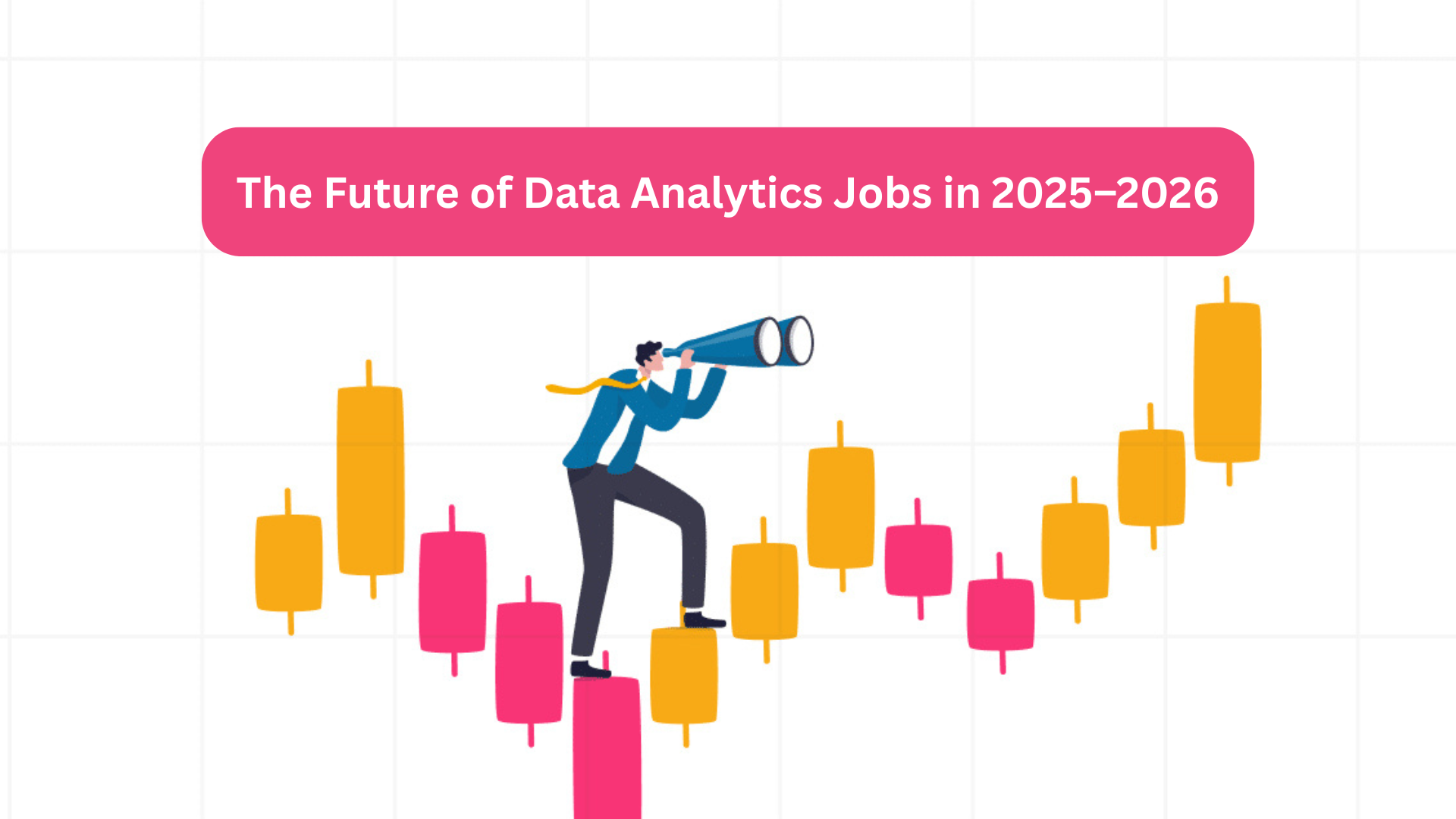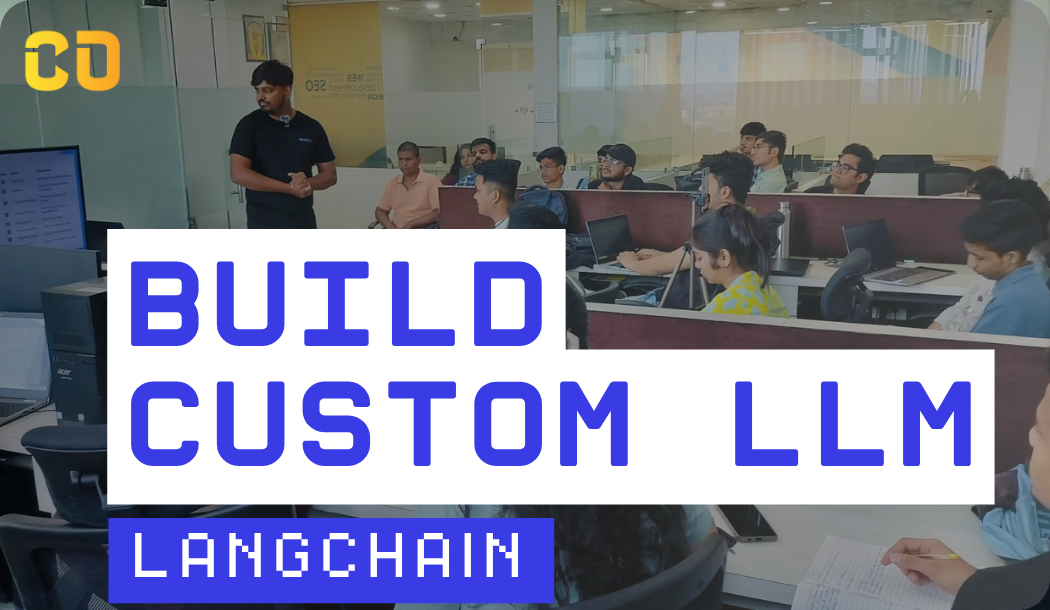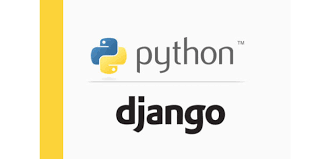Data Science is a multidisciplinary field that combines statistics, computer science, and domain knowledge to extract insights from data. As a Data Scientist at Cognizant, you need to be well-versed in various techniques and concepts. Below are the top 20 Data Science interview questions to help you prepare.
1. What is Data Science?
Data Science is the field of study that uses scientific methods, algorithms, and systems to extract knowledge and insights from structured and unstructured data. It combines various fields, including statistics, data analysis, machine learning, and computer science.
2. What are the key steps in the data science process?
The key steps in the data science process include:
- Problem Definition: Clearly define the problem to be solved.
- Data Collection: Gather relevant data from various sources.
- Data Preprocessing: Clean and prepare the data for analysis.
- Exploratory Data Analysis (EDA): Analyze data to uncover patterns and insights.
- Modeling: Build predictive models using machine learning algorithms.
- Evaluation: Assess model performance using appropriate metrics.
- Deployment: Implement the model in a production environment.
- Monitoring and Maintenance: Continuously monitor model performance and update as necessary.
3. What is the difference between supervised and unsupervised learning?
- Supervised Learning: Involves training a model on labeled data, where the outcome variable is known. Examples include regression and classification tasks.
- Unsupervised Learning: Involves training a model on unlabeled data, where the outcome variable is unknown. Examples include clustering and dimensionality reduction.
4. Explain the concept of overfitting and how to prevent it.
Overfitting occurs when a model learns the training data too well, including noise and outliers, leading to poor performance on unseen data. To prevent overfitting:
- Use techniques like cross-validation.
- Simplify the model (e.g., reduce the number of features).
- Use regularization techniques (e.g., L1, L2 regularization).
- Gather more training data.
5. What is feature engineering, and why is it important?
Feature engineering is the process of selecting, modifying, or creating new features from raw data to improve model performance. It is important because high-quality features can significantly enhance the predictive power of the model, leading to better outcomes.
6. Describe the difference between Type I and Type II errors.
- Type I Error: Also known as a false positive, it occurs when the null hypothesis is incorrectly rejected when it is actually true.
- Type II Error: Also known as a false negative, it occurs when the null hypothesis is not rejected when it is false.
7. What is the purpose of cross-validation?
Cross-validation is a technique used to assess how a model generalizes to an independent dataset. It helps in:
- Reducing overfitting.
- Providing a better estimate of model performance.
- Comparing different models on the same dataset.
8. Explain the difference between precision and recall.
- Precision: Measures the accuracy of positive predictions. It is defined as the number of true positives divided by the total number of positive predictions (true positives + false positives).
- Recall: Measures the ability of a model to find all the relevant cases (true positives). It is defined as the number of true positives divided by the total number of actual positives (true positives + false negatives).
9. What is the purpose of a confusion matrix?
A confusion matrix is a performance measurement tool for classification models. It summarizes the results of predictions by displaying the true positives, true negatives, false positives, and false negatives, helping to visualize model performance and calculate metrics like accuracy, precision, recall, and F1 score.
10. Describe what a ROC curve is.
A Receiver Operating Characteristic (ROC) curve is a graphical representation of a model's diagnostic ability across different thresholds. It plots the true positive rate (sensitivity) against the false positive rate (1 - specificity). The area under the ROC curve (AUC) is a measure of the model's ability to distinguish between classes.
11. What is regularization, and why is it used?
Regularization is a technique used to prevent overfitting by adding a penalty to the loss function based on the magnitude of the coefficients. Common types include L1 (Lasso) and L2 (Ridge) regularization. Regularization encourages simpler models that generalize better to new data.
12. Explain the concept of bagging and boosting.
- Bagging (Bootstrap Aggregating): A technique that improves the stability and accuracy of machine learning algorithms by combining multiple models trained on different subsets of the training data (e.g., Random Forest).
- Boosting: An ensemble technique that combines multiple weak learners to create a strong learner by adjusting the weights of misclassified instances (e.g., AdaBoost, Gradient Boosting).
13. What is a decision tree, and how does it work?
A decision tree is a supervised learning algorithm used for classification and regression tasks. It works by recursively splitting the dataset into subsets based on the most significant features, creating a tree-like structure where each node represents a feature and each branch represents a decision rule.
14. What are the assumptions of linear regression?
The key assumptions of linear regression include:
- Linearity: The relationship between independent and dependent variables is linear.
- Independence: Observations are independent of each other.
- Homoscedasticity: The residuals have constant variance at all levels of the independent variable.
- Normality: The residuals should be approximately normally distributed.
15. How do you handle missing data in a dataset?
Handling missing data can be done through various techniques:
- Remove missing values: Delete rows or columns with missing data.
- Imputation: Fill in missing values using methods like mean, median, mode, or using predictive models.
- Flagging: Create a new feature to indicate missing values.
16. What is clustering, and can you name some clustering algorithms?
Clustering is an unsupervised learning technique that groups similar data points into clusters based on their characteristics. Some common clustering algorithms include:
- K-Means
- Hierarchical Clustering
- DBSCAN
- Gaussian Mixture Models (GMM)
17. Explain what natural language processing (NLP) is.
Natural Language Processing (NLP) is a field of artificial intelligence that focuses on the interaction between computers and human language. It involves tasks such as language understanding, sentiment analysis, text classification, machine translation, and more.
18. What is the purpose of exploratory data analysis (EDA)?
Exploratory Data Analysis (EDA) is an approach to analyze and summarize the main characteristics of a dataset, often using visual methods. The purpose of EDA is to:
- Understand the data distribution and patterns.
- Identify relationships between variables.
- Detect outliers and anomalies.
- Formulate hypotheses for further analysis.
19. What are ensemble methods, and why are they used?
Ensemble methods combine multiple models to improve overall performance and robustness. They are used because they often lead to better accuracy and generalization compared to individual models. Common ensemble techniques include bagging, boosting, and stacking.
20. Describe what a neural network is.
A neural network is a computational model inspired by the human brain's structure. It consists of layers of interconnected nodes (neurons) that process input data. Neural networks are commonly used for tasks such as image recognition, natural language processing, and predictive modeling. They learn from data through a process called training, adjusting the weights of connections based on errors.
Conclusion
These top 20 Data Science interview questions and answers will help you prepare for your Cognizant Data Science interview. Focus on mastering core concepts, algorithms, and best practices to excel in the interview process.
Good Luck!








Add a comment: